The interior designer Michelle Gerson adds texture and color to a house in Water Mill, leaving minimalism in the dust
A young couple buy a plot of land in Water Mill, and on this plot of land they commission an architect to build a weekend house for their family. Eventually, the structure will span 12,000 square feet and have nine bedrooms and nine baths. When the sheetrock walls are in, but the finishes have yet to be chosen, the couple engage the designer Michelle Gerson, requesting interiors that are “modern but not minimal.”
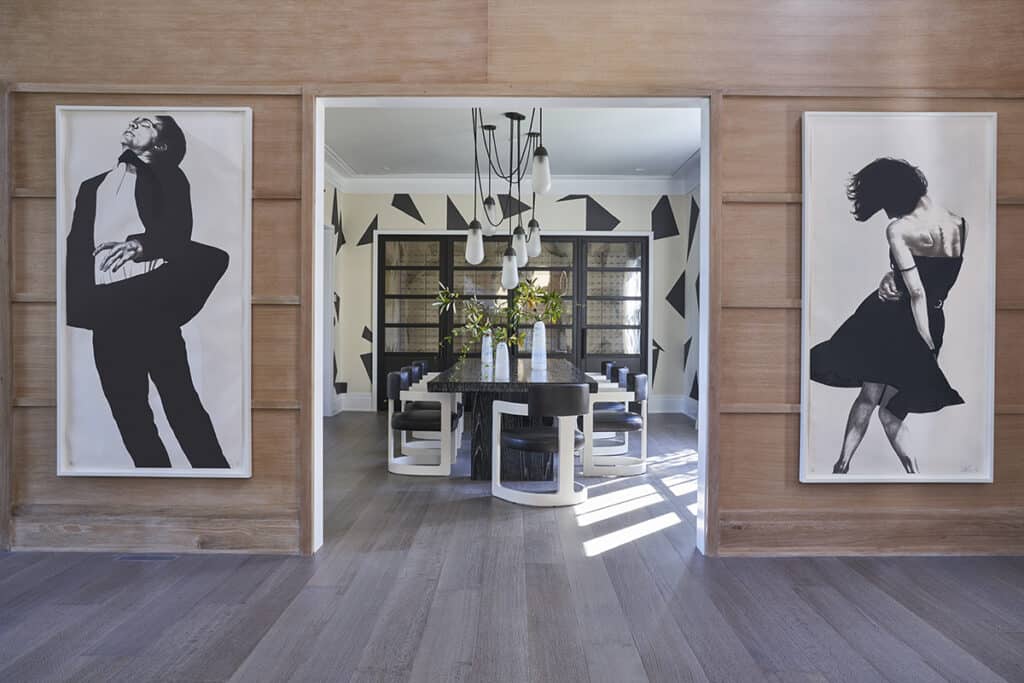
It wasn’t so long ago that “modern” and “minimal” were considered a contradiction in terms. In some design quarters, they still are. If you tell a decorator that you’re partial to modern design, there’s a good chance they’ll be showing you mood boards with gorgeous, austere interiors à la John Pawson before too long. But Gerson correctly interpreted her client’s use of the word “modern” to mean modern-ish, minus the minimalism. For some, the term “modern,” divested of its historical connotations, is synonymous with “contemporary” (a design descriptor, Gerson says, that has faded away). Gerson posits that the recent surge of interest in soft-touch modern design may be a reaction to the prevalence of classic modern interiors with their pared-back interiors leached of color. Such rooms “look great on camera,” she says, “but they’re not so comfortable to live in.” Modern sofas, in particular, she observes, “require your best posture.”
Livability mattered a great deal to her clients, so on this project Gerson paid special attention to the comfort quotient — without compromising on style. “The clients wanted a house that looked both lived-in and of the moment,” she says. To achieve that elusive combination, she relied on mid-century gestures paired with an overall design scheme that has what she calls “a clean-lined 2020 vibe without a ton of clutter.”
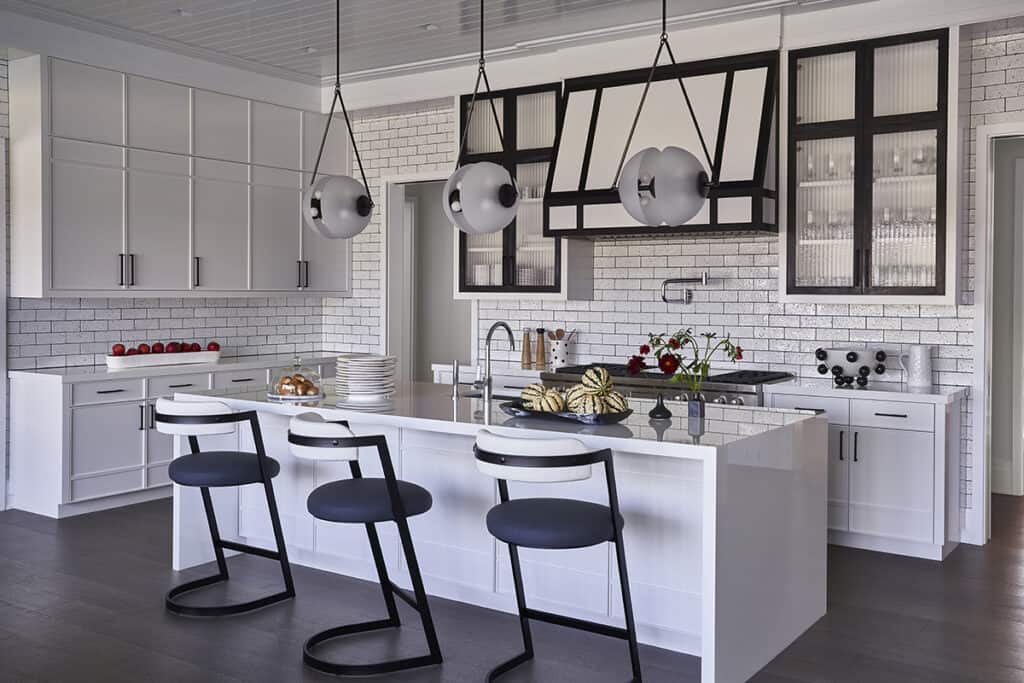
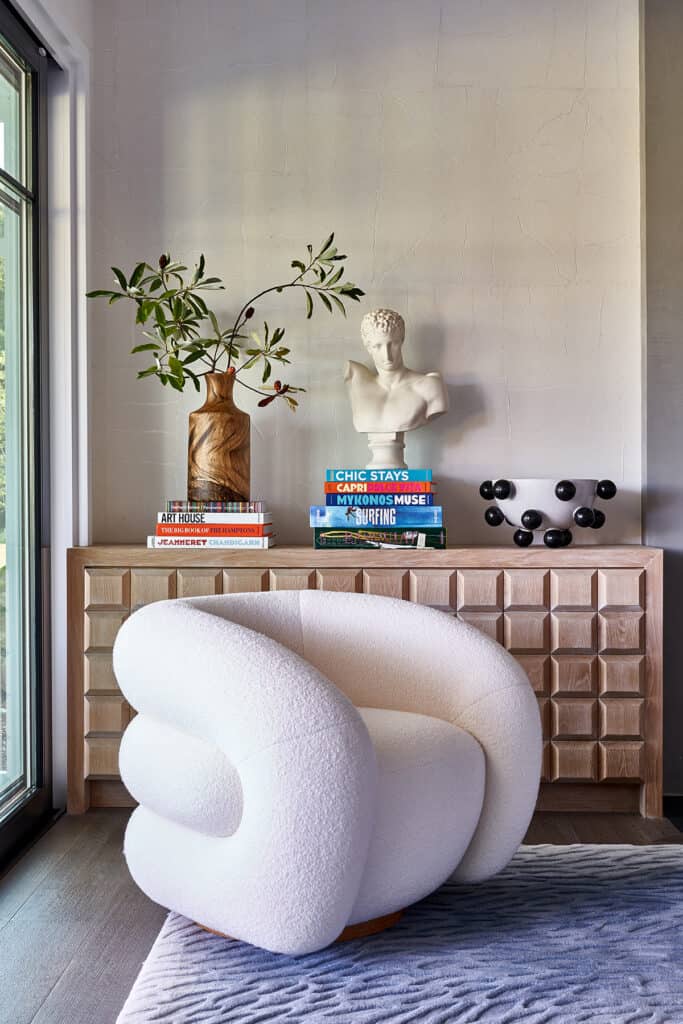
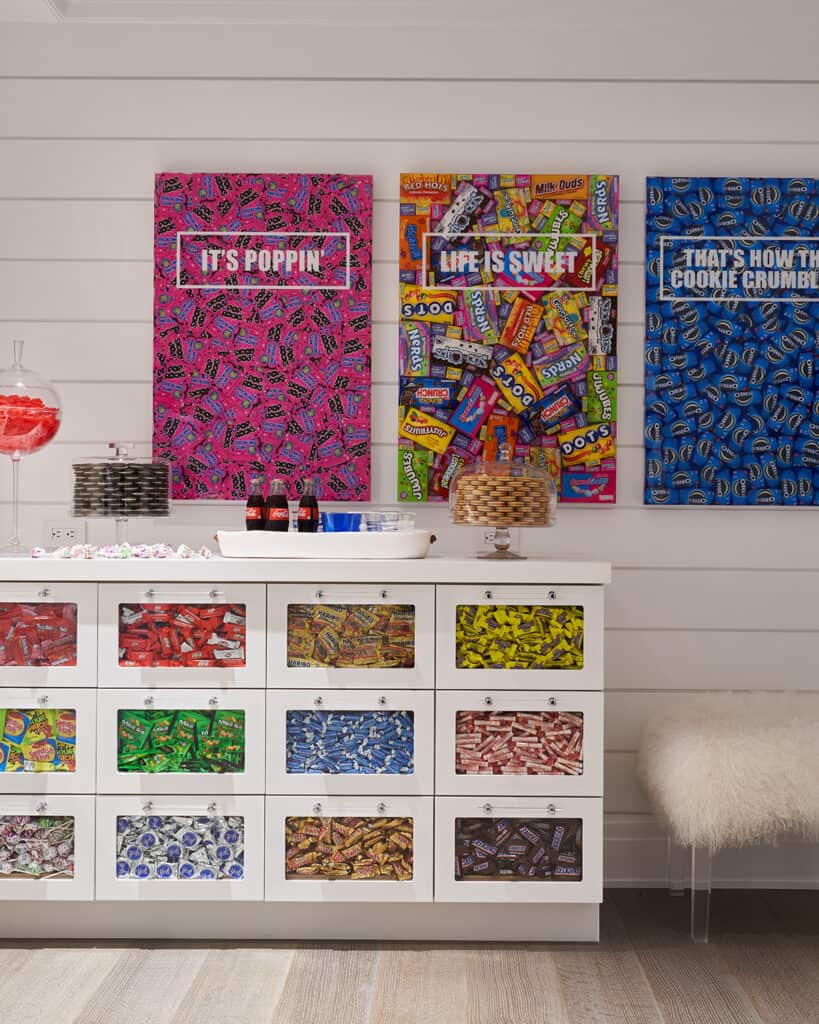
Needless to say, the structure didn’t always look that way. When Gerson arrived on the scene, there was sheet rock on the walls, but “no trim or details. The kitchen wasn’t designed. The plumbing wasn’t in. The stairs were finished and the layout was done, but that was it.” Her initial efforts were focused on detail work such as adding reverse shiplap paneling and cerusing the walls with oak in situ (“Quite the production,” she recalls). And because the principal bedroom suite had an extra-high ceiling — “It made the room feel cavernous” — she decided to cover the sheet rock in rift-sawn white oak for a warming effect. Later, she designed a mohair-upholstered headboard for the bed. (At nearly eight feet tall, it required the services of eight men to carry it into the house and up the stairs.)
And because the client wanted the house to have color, Gerson chose a palette of blues. “We weren’t going for the rainbow-house look, but on the other hand, we didn’t want the colors to be too neutral either.” The idea was to deploy color in a thoughtful way, in shades that “didn’t give you a headache when you walked through the door.”
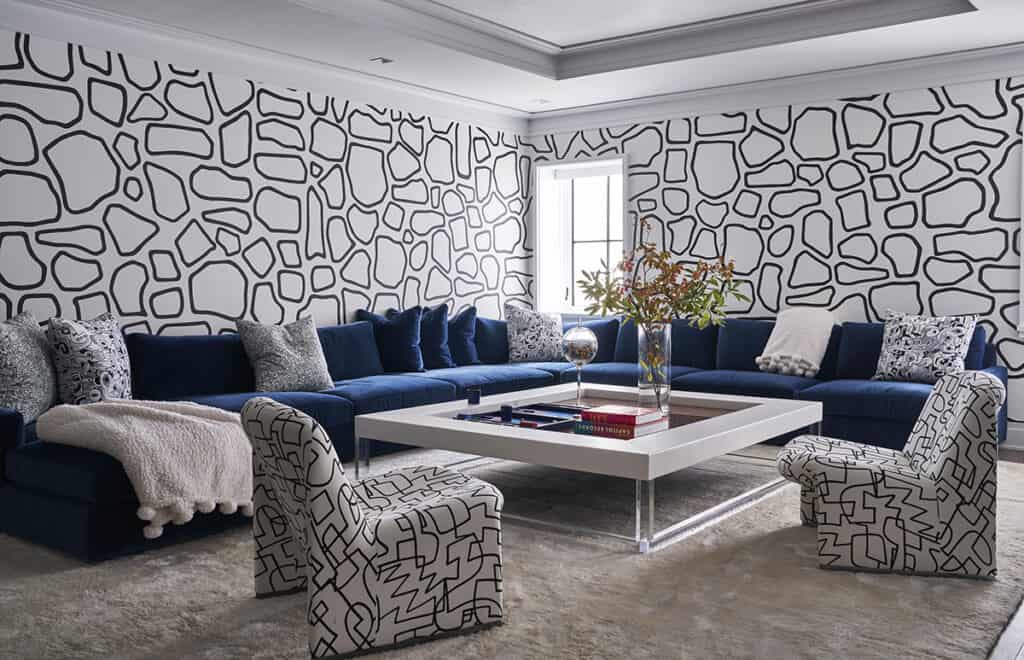
Next, Gerson set about building up layers of texture. The family room, for instance, now features a fireplace with a surround that is finished in hand-troweled concrete, a mohair sofa in periwinkle-blue, a resin coffee table poured by Martha Sturdy, and two curvy cream-colored swivel chairs of her own design. Elsewhere, she added tongue and groove doors, burlap-like wall coverings, and heaps of soft furnishings that have a distinctly tactile quality.
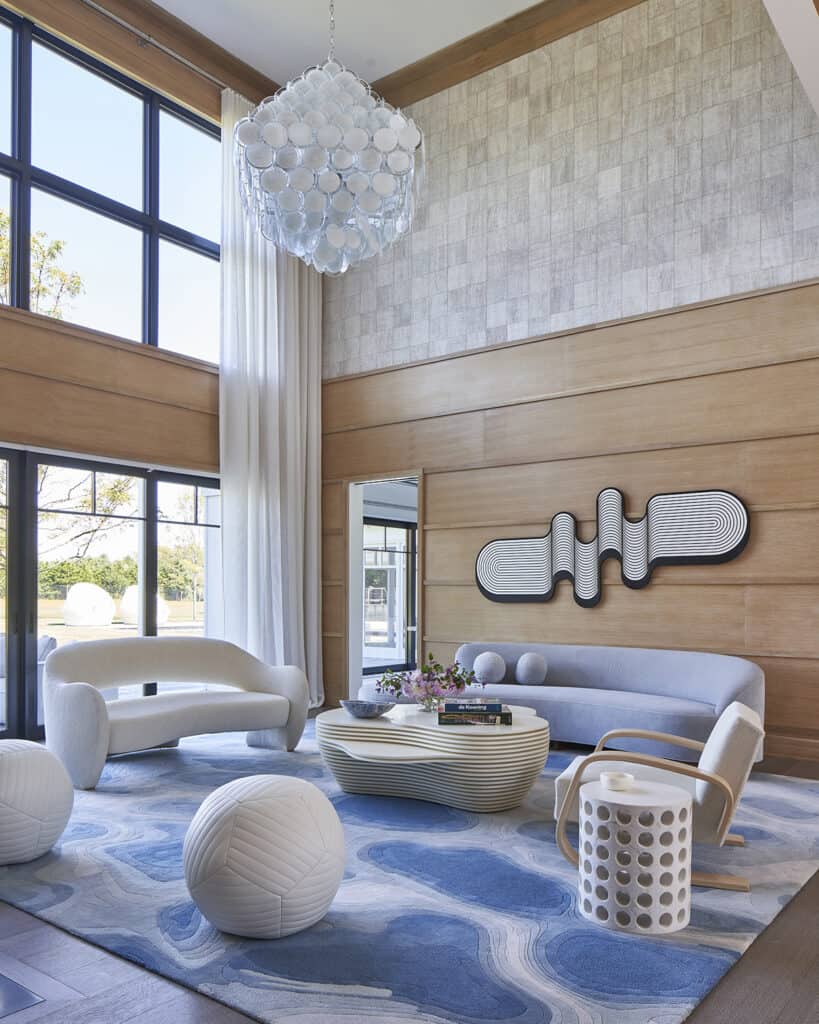
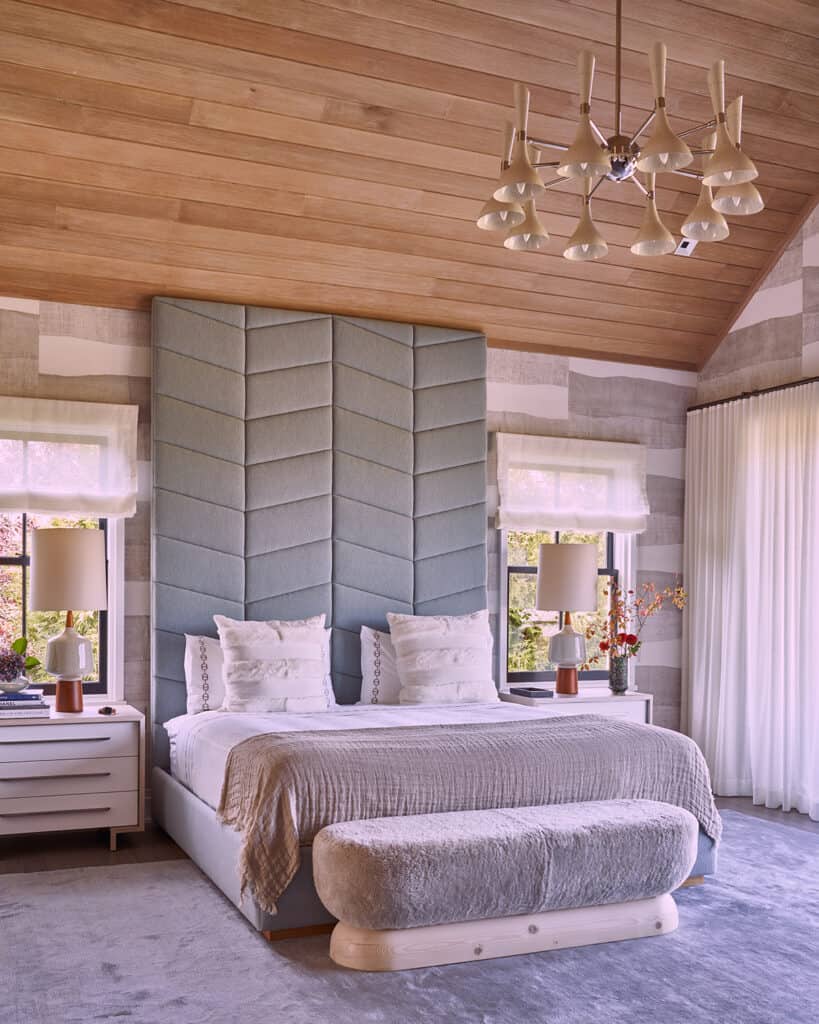
“At the end of the day people look at the whole picture.” They may not notice each layer of texture, she says, but it’s the accretion of “small details that create the mood in a house.” The most challenging aspect of the project, Gerson says, was to do with logistics, as she was brought on board after the project was underway. To have the house ready in time for the summer season, many decisions had to be made in rapid succession. Thus, the homeowners did not have the luxury of mulling things over, a habit of mind that has derailed many a design project.
“Often I think our first instincts are best,” she reflects. Sometimes clients will second guess themselves only to find themselves back where they began six months later. But in this case when I presented the options, they chose right and they did so right away. They put the pedal to the metal and floored it.”
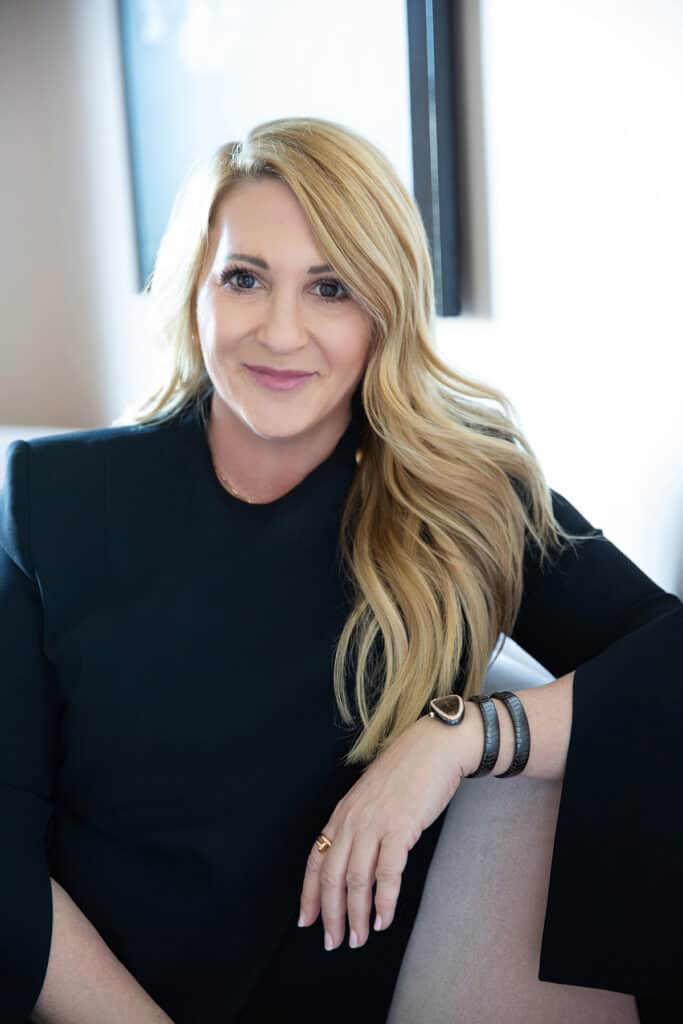












!['The Maples' is a prestigious generational compound of two extraordinary estates: 18 Maple and 22 Maple. This rare offering, designed by luxury architect Lissoni partners New York and developed by visionaries Alessandro Zampedri-CFF Real Estate and JK Living, redefines opulence with the highest quality of craftsmanship and captivating views of the Atlantic Ocean. Represented by @nycsilversurfer and @challahbackgirl of @douglaselliman. [link in bio]](https://hamptonsrealestateshowcase.com/wp-content/uploads/sb-instagram-feed-images/438891010_1083749139481747_7890082604579275354_nfull.jpg)
![Featuring 360-degree water views on Mecox Bay, the Atlantic Ocean and Channel Pond, 1025 Flying Point offers the ultimate beach cottage that is flooded with natural light. With panoramic views, proximity to the ocean, and a private walkway to Mecox bay for kayaking or paddle boarding, this truly is a special retreat. Represented by @ritcheyhowe.realestate and @hollyhodderhamptons of @sothebysrealty. [link in bio]](https://hamptonsrealestateshowcase.com/wp-content/uploads/sb-instagram-feed-images/438994305_737511778456166_4602476013493875279_nfull.jpg)
![Attention advertisers! 📣 Secure your spot in the highly anticipated Memorial Day edition #HRES. Reach thousands of potential clients and showcase your brand in one of the most sought-after publications in the Hamptons, NYC, Palm Beach, and beyond. Contact us now to reserve your ad space! [link in bio]](https://hamptonsrealestateshowcase.com/wp-content/uploads/sb-instagram-feed-images/438549843_275102939023235_6718257301437562124_nfull.jpg)
![You eat with your eyes, and on the East End, it’s important that what you eat looks just as good as how it tastes. At @rosies.amagansett, the restaurant itself is plenty photo-worthy with blue ceramic tiling and yellow and white striped fabric wallpaper. But for a dish that will light up your photos, head directly to the salmon tartare! [link in bio]](https://hamptonsrealestateshowcase.com/wp-content/uploads/sb-instagram-feed-images/437094269_7296727147115953_1594410326824303644_nfull.jpg)

![We were honored to be the media sponsor for @blackmountaincapital's open house event with @jameskpeyton and @jfrangeskos at 11 Dering Lane in East Hampton! Other sponsors included @landrover, Feline Vodka, @rustikcakestudio, @la_parmigiana, @lahaciendamexicangrill11968, @homesteadwindows, Stone Castle, @talobuilders, and @thecorcorangroup.
A big thank you Carrie Brudner of Black Mountain Capital for putting together this fabulous event! [link in bio]](https://hamptonsrealestateshowcase.com/wp-content/uploads/sb-instagram-feed-images/437081213_762912965932136_6847332836522786568_nfull.jpg)

![Blooms Galore at the Long Island Tulip Festival! 🌷✨ Mark your calendars for April 15th as the vibrant tulips at @waterdrinkerlongisland burst into full bloom! Enjoy a day filled with colorful splendor, food trucks, live music, and more. [link in bio]](https://hamptonsrealestateshowcase.com/wp-content/uploads/sb-instagram-feed-images/437083429_974242677583725_6855805712693638343_nfull.jpg)
